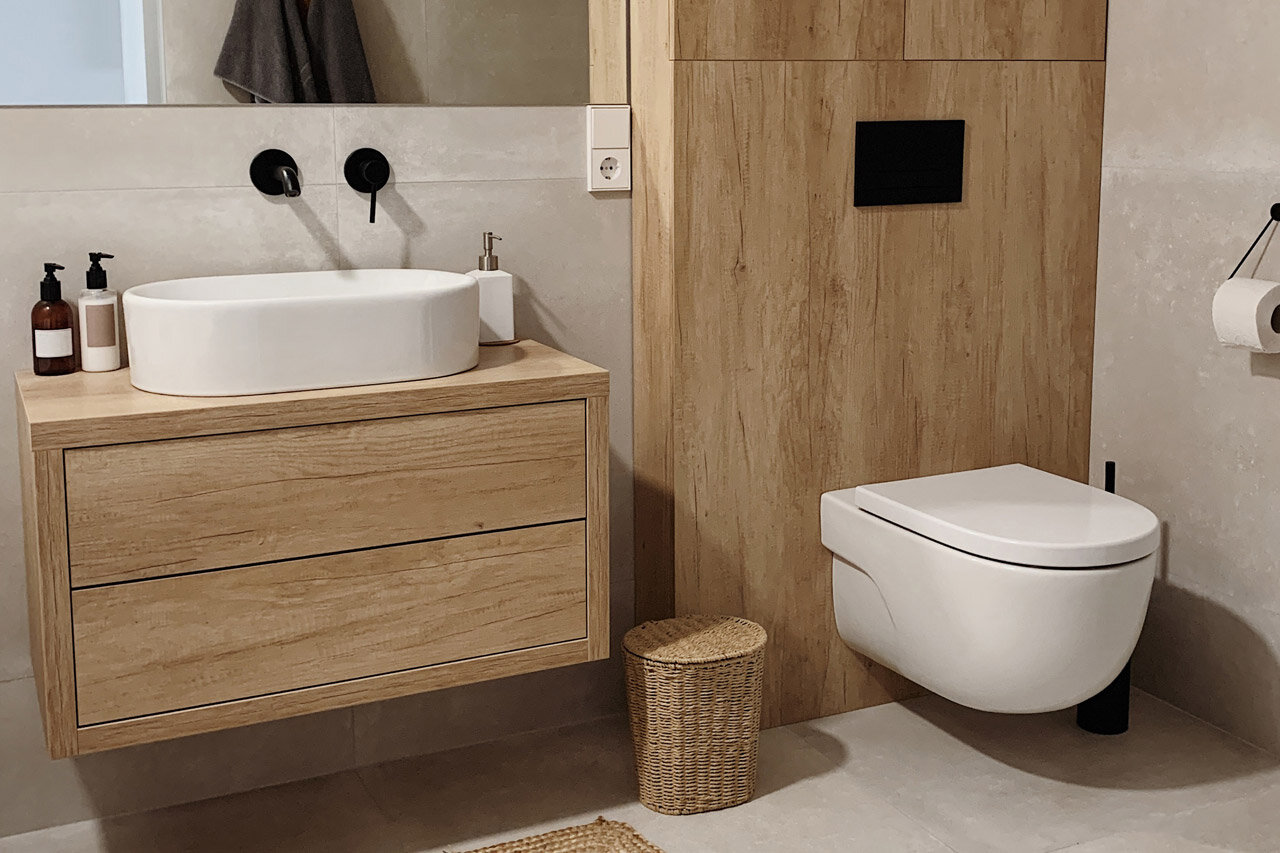Bathroom sanitary ware - general characteristics and types
3 October 2023

Introduction to sanitary ware
The term ‘sanitary ware’ refers to sanitary appliances necessary for performing hygiene tasks. These include toilet bowls, bidets, washbasins, bathtubs and shower trays. Traditionally, sanitary ware was made from ceramics, however, nowadays the choice is much wider and this refers not only to the shapes and sizes of individual pieces, but also to the materials used in their production. This is especially true of washbasins, which can be made of stone, metal, wood or glass, for example.
Types of bathroom sanitary ware
As it has just been mentioned, bathroom sanitary ware is available in many varieties, and bathroom supply stores offer basins, toilet bowls or bidets that differ in many respects.
Types of washbasins
Let’s put washbasins as first on our shopping list. Basins can be divided according to various criteria. First of them is the installation method. Looking from this perspective, there is a choice of wall-hung basins, which are mounted to the wall, and stand-up basins, meaning those placed directly on the floor. There are also countertop basins, which are installed on the counter, undermount basins, which are installed on a level of the counter or cabinet, and recessed basins, whose rim is above the counter.
Another criterion used to divide them is the material they’re made from. Still the most common one is ceramics as it’s durable, timeless and matches most interior designs. Ceramics can be made from porcelain, earthenware or porcelite. Also, there is a choice of basins made of stone, glass, metal or wood. They look original and can be a marvelous decoration for the bathroom.

Types of toilet bowls
As in the previous case, there is more than one type of toilet bowls to choose from. They, too, can be divided by the installation method. We can equip the bathroom with either a wall-hung toilet bowl or a stand-up bowl. More people opt for the first variant as such a piece of sanitary ware saves a lot of space and allows us to avoid hard-to-reach nooks and crannies, which in turn makes cleaning quicker and easier. On the other hand, it’s not always possible to install it in every bathroom, and the installation of a stand-up toilet is simpler and faster.
Types of bidets
A bidet is visually similar to a toilet bowl, with the difference that it doesn’t have the seat, and instead it has a bidet faucet. Theoretically, the bidet is not an essential bathroom appliance, but it improves convenience. In small bathrooms, investors discard this solution, while in more spacious interiors, bidets are becoming every time more common. On one hand, the bidet increases the aesthetic value of the bathroom, and on the other hand, it improves the convenience of performing hygienic tasks. There is a choice between wall-hung and stand-up bidets. From the start, it’s recommended to opt for one that is a set with the toilet bowl.

Characteristics of bathroom sanitary ware
Bathroom sanitary ware should blend perfectly with the overall decor, but above all it should be ergonomic. It’s not only about its daily use, but also how easy it is to keep it clean. Resistance to damage and water is not without importance either, which is especially valid in bathrooms. What bathroom sanitary ware will meet all these conditions?
Durability and resistance to humidity
Durability is essential. Bathroom renovation is usually expensive and tedious, so the appliances that are placed there should be of high quality. Reputable manufacturers ensure that bathroom sanitary ware meets strict requirements. What counts is resistance to scratches and mechanical damage, as well as resistance to water. Classic sanitary ware answers all these requirements, but it doesn’t mean that other materials perform worse. It’s necessary, however, that more susceptible materials, such as wood, are properly prepared and impregnated. Since bathroom sanitary ware is supposed to last for years, we ought not to limit ourselves to the cheapest products. It should be chosen as carefully as when searching for shower enclosures. They, too, are supposed to last a long time, so their selection should be careful.

Aesthetics and variety of designs
Another important matter is appearance. Depending on the decor we choose for our interior, we should look at different variants and designs. The most universal solution is white sanitary ware. For traditional bathrooms, it’s worth taking a closer look at curved models. On the other hand, for Scandinavian and contemporary interiors, square pieces of sanitary ware work great. Wanting to add some color and freshness to a contemporary bathroom, it’s a good idea to choose colored sanitary ware. Also, a glass washbasin in an uncommon color will surely stand out. In loft and modern glam styles, black bathroom sanitary ware will look splendid. With the former, matte pieces will match better, while the latter will look amazing with pieces with a glossy finish.
Ease of cleaning
It’s not difficult to make the bathroom dirty. Limescale deposits and residue from beauty products are a standard fare. To make sure the bathroom looks good at all times, it should be kept clean. We ought to remember about it when choosing the sanitary ware, and opt for models that can be cleaned easily. With porcelain, it’s not a big issue, but if stone or wood are involved, it’s not so obvious. To facilitate cleaning, reputable manufacturers cover their products with special coatings that prevent limescale from settling. Such a coating is used, for example, in SanSwiss shower enclosures and bath screens. Apart from these, the manufacturer also offers stylish shower trays.
